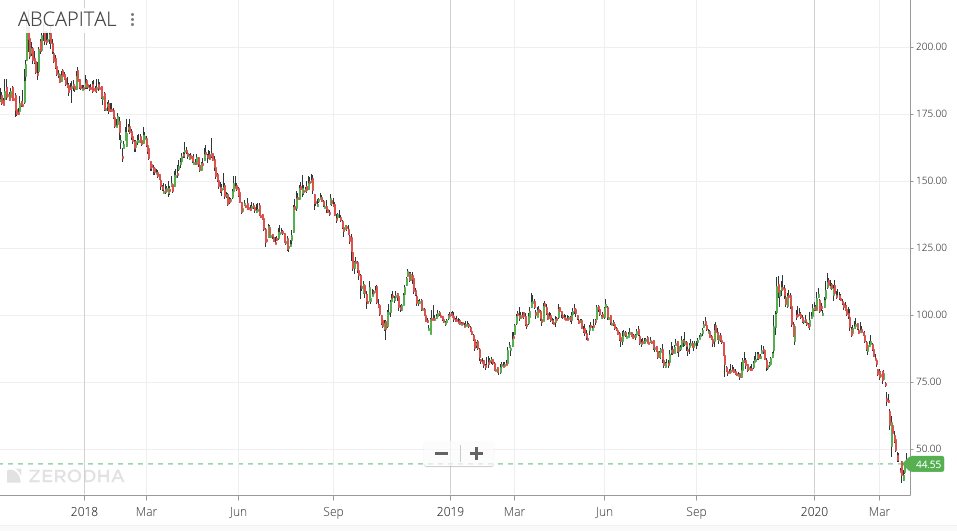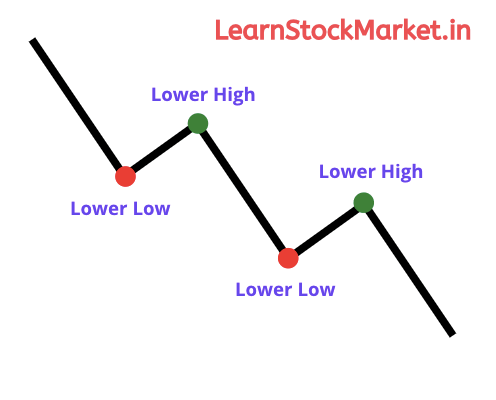There are two types of trends – Uptrend and Downtrend. A stock is said to be in a ‘Downtrend’ when the direction of the price movement is downwards.
When the price movement is in the opposite direction i.e upwards, the stock is said to be in an ‘UpTrend’.
When the price is neither going upwards or downwards, it’s called ‘Side Ways’ movement.
In this article, we will learn about ‘Downtrend’ and ways to identity stocks that are moving downwards.
The above chart is of Aditya Birla Capital (AB Capital).

Which trend do you think AB Capital is in? Uptrend, Downtrend or Sideways?
Anyone would be able to tell that it’s a downtrend. Without any knowledge about stock market, just by looking at the chart, it’s clearly visible that the stock has been moving downwards.
From nearly ₹ 250 per share in 2018 to ₹ 45 in the corona-virus led stock market crash in 2020, Aditya Birla Capital has been on a downtrend for nearly 3 years now.
Lower Highs and Lower Lows
No stock moves straight in one direction. The price will often go up and fall, before going up again. This is for those stocks that are moving in an upward direction.
But for stocks in ‘Downtrend’, the price will fall, then rise, before falling even more. This will continue till the stock hits what is called as a ‘bottom’.
One of the easiest ways to identity a stock in a ‘Downtrend’ is to see if the stock is going down, rising up and then going below its previous low.
This is referred to as ‘Lower Highs and Lower Lows’ – which is very similar to a staircase that moves downwards.

Some important points:
1. Never buy stocks that are in a downtrend. Buying stocks that are in downtrend is like swimming against the tide at the beach. It’s difficult and the chance of drowning is high. It’s the same with stocks. A stock that has fallen from 250 to 200, can also fall from 200 to 100 and then lower. AB Capital has showed investors just how low a stock can go. Inexperienced investors do the mistake of averaging downwards and wait for reversal. In most cases, the reversal does not come. If it does, it comes after the investor has lost confidence in his investment or after he has run out of patience.
2. Stocks in long-term downtrends will test your patience and most investors won’t be able to make money out of them. Most would sell out when they get their average price back. Understand that the current price is the collective wisdom of all market participants combined, they could be right. They could know more than you. It’s better to wait for the downtrend to complete and then buy when the turnaround begins – usually spotted by ‘higher highs and higher lows’. Of course, this is easier said than done – but with time in the market, you should be able to get better with your buy and sell decisions.
3. You could ‘short sell’ stocks that are in downtrend i.e sell first and buy later. But in the cash (delivery) segment, it’s only possible to short in intraday trade. You cannot carry your ‘short’ position overnight. This is possible in the derivative (future and option) segment, but inexperienced traders should avoid trading in futures or options – due to the high risk involved.

Leave a Comment